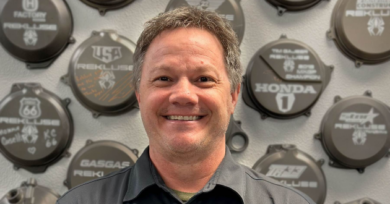Nov. 12, 2007: Key to service department profits: tracking performance
These articles recap some of the opportunities uncovered by Gart Sutton & Associates’ powersports specialists during consulting visits.
These are followed by recommended actions that address the issues. The goal is to provide ideas to help improve your dealership.
Dealership Details
This multi-line dealership was a recent buy-out that was moved to a large, modern facility. The store is located on a high-traffic highway in a rural area that draws from a nearby city. Projected annual volume is around 400 units. The owners have no previous experience in the powersports business, but they own a successful high-margin sports equipment business. They are discovering that a powersports dealership is a complex business with tight margins.
The goal for this engagement was to identify and establish the processes necessary for the profitable operation of each department. In earlier articles, our consultants reported on the overall dealership situation, the sales and F&I departments and the parts department. This time, the series concentrates on the service department.
The service department
The service manager is a loyal, long-time employee with above-average customer skills and a calm demeanor under pressure. There is no designated service writer, but the service manager is highly capable in this area. His “buddy” relationship with his technicians and departmentally defensive management style has created a silo effect in this department. Although he indicated he had service management training from multiple sources, he is not performing the basic service management functions. He is not tracking the performance of the technicians or the department.
The service manager was not aware of the definitions and benchmarks for the three basic service department measurements:
The definitions, formulas and benchmarks were provided and discussed.
No time clock was being utilized to track tech performance. None of the above measurements will be valid until all jobs are being tracked with a time clock.
The general manager indicated they had time clocks that would be installed.
A technician performance tracking spreadsheet was provided. The service manager will e-mail copies of these sheets to the consultant on a periodic basis to ensure the tool is being utilized.
The profitability of the department (labor sales less tech compensation) was not being measured. This cannot be accomplished until the data is properly departmentalized.
The department is very unprofessional in appearance. It would not be an asset to show this area to a customer. The department has an unpainted, dirty appearance and is cluttered with parts and “junk.” Plus, no uniforms or name tags are worn by the staff.
The layout is also poor in functionality. Consider:
Service department/write-up area options were discussed with the dealer principal.
There is an overly detailed menu of services displayed. A simplified, more effective menu display system was discussed. A binder with details of common services priced by model must also be developed. This will allow staff to quote accurate prices for most services. They have their labor rate displayed in multiple places in the parts department and the write-up area. Since a main purpose for the menu is to get away from the negative of discussing hourly rates with the consumer, this needs to be changed.
A reception checklist with unit diagrams is being employed during the write-up process. This provides for consistent checking of necessary details and protection from damage claims as well as providing add-on sales opportunities.
A number of costly inefficiencies were observed and discussed such as:
A repair order audit revealed customer signatures and mostly good tech notes. In addition, there are relatively few open repair orders over 90 days. The service manager says he reviews the open repair orders on a weekly basis.
Author, speaker and educator, Gart Sutton has been retained by every major powersport manufacturer/distributor. He is a frequent keynote speaker for national motorcycle conventions and state motorcycle dealer association events. Visit www.gartsutton.com








